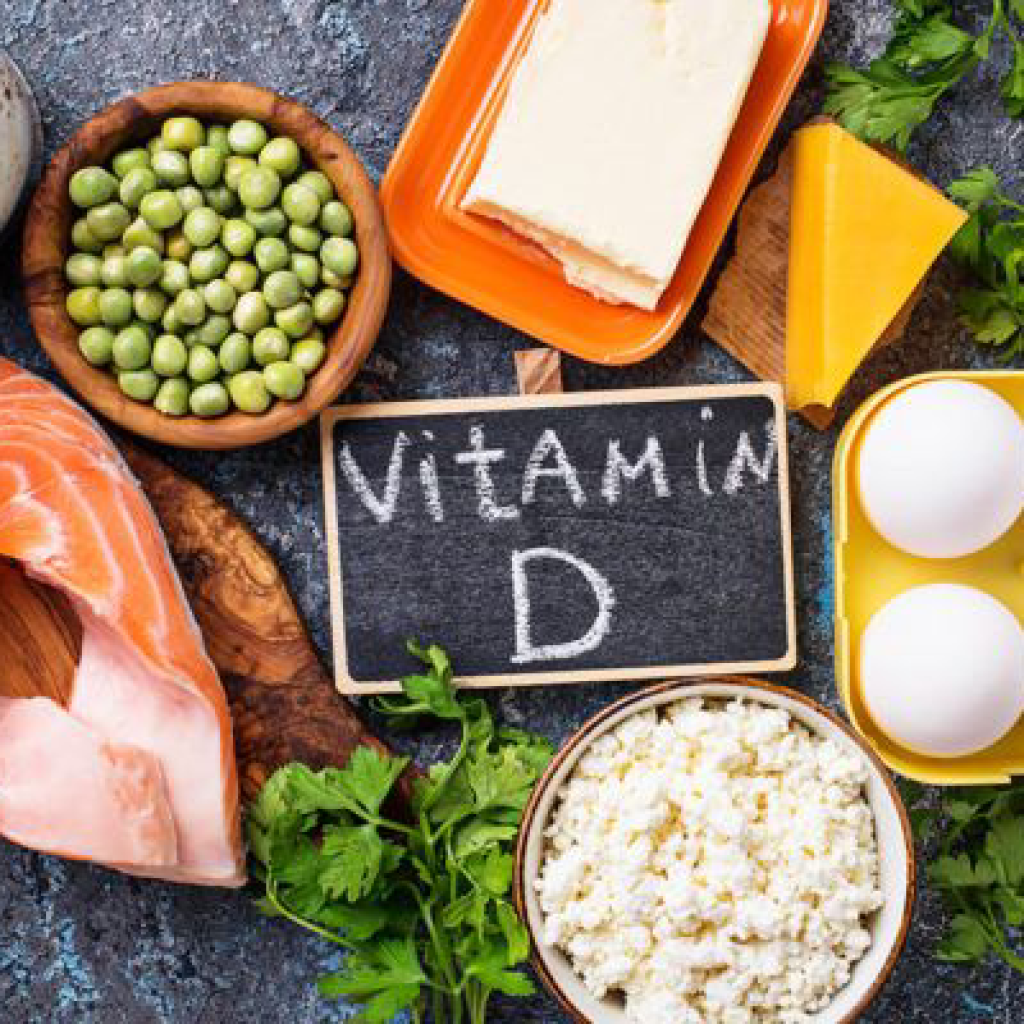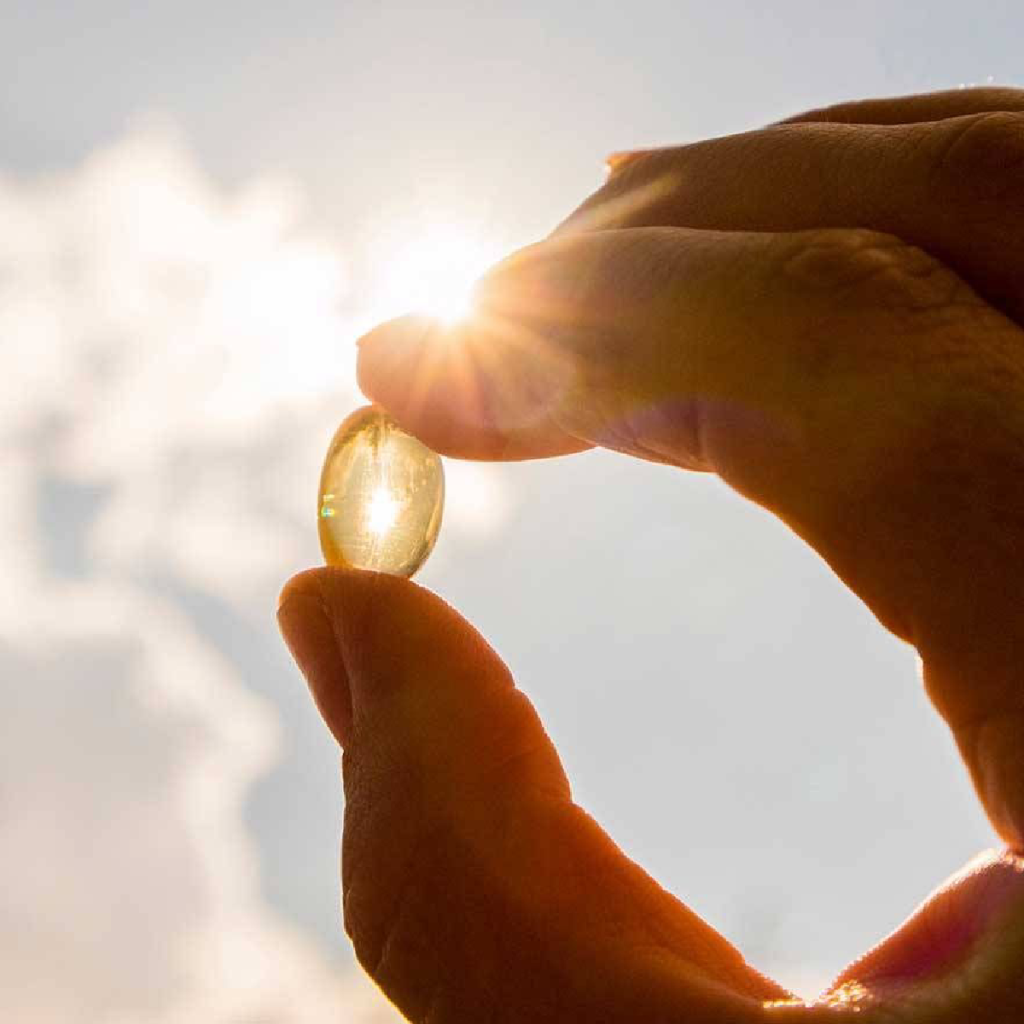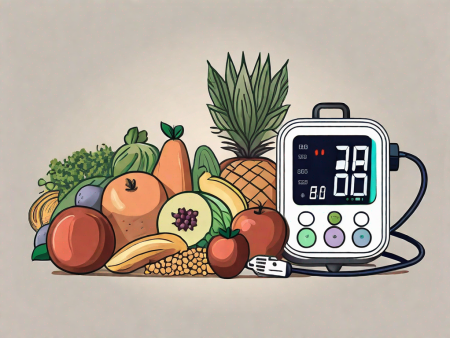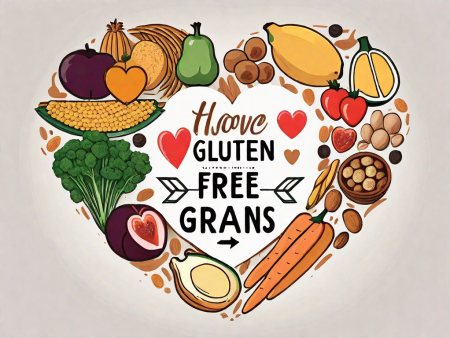Discover the impact of Vitamin D levels on the aging process and learn how maintaining optimal levels can promote healthy aging.
How Vitamin D Levels Affect Aging
Are you ready to unlock the secrets of eternal youth? Well, maybe not quite, but there’s growing evidence that vitamin D levels have a significant impact on the aging process. In this article, we’ll explore the importance of vitamin D, its connection to aging, the science behind it all, and how to optimize your vitamin D levels for healthy aging. So lather on that sunscreen (don’t worry, we’ll explain why later), and let’s dive in!

Understanding Vitamin D and Its Importance
First things first, let’s get to know this superstar vitamin. Vitamin D, often referred to as the “sunshine vitamin,” is unique because our bodies can produce it when exposed to sunlight. It’s a fat-soluble vitamin that plays a crucial role in maintaining healthy bones and teeth, supporting immune function, and even regulating mood. Talk about a jack-of-all-trades!
But let’s dive deeper into the fascinating world of vitamin D and explore its many roles and sources.
The Role of Vitamin D in the Body
When it comes to our skeletons, vitamin D helps our bodies absorb calcium and phosphorus, which are essential for building and maintaining strong bones. Think of it as the super glue that holds our skeletons together! But that’s not all — vitamin D also flexes its muscles by acting as a signal that affects gene expression in various cells throughout our bodies. Essentially, it helps keep our immune system in tiptop shape and may even have a hand in preventing chronic diseases. Who knew vitamin D had such hidden talents?
Furthermore, vitamin D has been linked to brain health and mood regulation. Research suggests that low levels of vitamin D may be associated with an increased risk of depression and other mood disorders. So, soaking up some sun or getting enough vitamin D through other sources could potentially brighten your day in more ways than one!
Sources of Vitamin D
Now that we appreciate how amazing vitamin D is, let’s find out where we can get our hands on it. The most natural way to boost your vitamin D levels is through good old-fashioned sunshine. Just a few minutes of sun exposure on your face, arms, and legs a few times a week can do wonders for your vitamin D production. But hold on, don’t go running outside just yet! We need to talk about the risks of overexposure and the importance of sun protection.
Excessive sun exposure without proper protection can lead to sunburns, premature aging, and an increased risk of skin cancer. It’s crucial to strike a balance between enjoying the benefits of sunlight and protecting our skin from harmful UV rays. Applying sunscreen with a high SPF, wearing protective clothing, and seeking shade during peak sun hours are all essential practices to keep in mind.
If the weather isn’t cooperating or you prefer to stay indoors, fear not. Vitamin D can also be found in certain foods. Fatty fish, like salmon and mackerel, are excellent sources. Ever wonder why fish glow? Just kidding! It’s actually because they’re rich in vitamin D. Other sources include fortified dairy products, eggs, and even mushrooms that have been exposed to ultraviolet (UV) light during cultivation. So whether you’re a sun worshipper or a fish lover, there are options for everyone!
It’s worth noting that some individuals may have difficulty obtaining enough vitamin D through sunlight and diet alone. In such cases, supplements may be recommended by healthcare professionals to ensure adequate intake.
So, whether you’re basking in the sun, enjoying a delicious seafood feast, or savoring a vitamin D-fortified glass of milk, you can rest assured knowing that you’re giving your body the essential vitamin it needs to thrive.
The Connection Between Vitamin D and Aging
Now let’s dig into the juicy details about how vitamin D affects the aging process. Spoiler alert: it’s not just about wrinkles and gray hair!
As we age, our bodies become less efficient at producing and absorbing vitamin D. This can lead to a decline in vitamin D levels, which is bad news for our bones, immune system, and overall health. Research has shown that older adults with low vitamin D levels are at a higher risk of developing osteoporosis, falls, fractures, and other age-related diseases. So, it’s crucial to pay attention to those vitamin D levels as we grow wiser!
But what exactly happens in our bodies when we don’t get enough vitamin D? Well, let’s take a closer look. Vitamin D plays a vital role in calcium absorption, which is essential for maintaining strong and healthy bones. When our vitamin D levels are low, our bodies struggle to absorb enough calcium, leading to weakened bones and an increased risk of fractures. This is especially concerning for older adults, as their bones naturally become more fragile with age.
However, the impact of vitamin D deficiency goes beyond just our bones. Recent studies have found links between low vitamin D levels and a higher risk of developing age-related diseases such as heart disease, diabetes, certain types of cancers, and even cognitive decline. While more research is needed to fully understand these connections, it’s clear that vitamin D has some serious superhero potential when it comes to fighting off the villains of aging.
So, what can we do to ensure we’re getting enough vitamin D as we age? Well, the sun is a great natural source of vitamin D. When our skin is exposed to sunlight, it produces vitamin D. However, as we get older, our skin becomes less efficient at synthesizing vitamin D from sunlight. Additionally, factors such as living in areas with limited sunlight, spending most of our time indoors, or wearing sunscreen can further hinder our vitamin D production.
That’s where dietary sources come into play. Foods such as fatty fish (like salmon and mackerel), fortified dairy products, egg yolks, and mushrooms are all excellent sources of vitamin D. Including these foods in our diet can help ensure we’re getting enough of this vital nutrient.
However, for some individuals, dietary sources alone may not be sufficient to meet their vitamin D needs. In such cases, supplementation may be necessary. It’s important to consult with a healthcare professional to determine the appropriate dosage and form of vitamin D supplementation, as individual needs can vary.
In conclusion, vitamin D deficiency is a common issue among older adults and can have significant implications for our health as we age. From weakened bones to an increased risk of age-related diseases, the consequences of low vitamin D levels are not to be taken lightly. By paying attention to our vitamin D levels and ensuring we’re getting enough through sunlight, diet, and possibly supplementation, we can give ourselves a fighting chance against the challenges of aging.
The Science Behind Vitamin D and Aging
Now let’s dive into the nitty-gritty scientific stuff. Don’t worry; we won’t overwhelm you with complex equations and lab coats. We’ll keep it fun, we promise!
As we embark on this scientific journey, let’s explore the fascinating relationship between vitamin D and aging. Our cells, those tiny powerhouses that make up our bodies, are at the frontlines of battle against the aging process. And guess who’s there to provide support and reinforcements? You got it — vitamin D! This incredible nutrient has been shown in studies to play a crucial role in protecting our cells from premature aging.
One of the ways vitamin D accomplishes this feat is by preventing telomeres, the protective caps on our chromosomes, from wearing down. Telomeres act as the body’s biological clock, and as we age, they naturally shorten. However, research suggests that vitamin D may help slow down this shortening process, effectively preserving the youthfulness of our cells. Talk about a timeless vitamin!
The Effect of Vitamin D on Cellular Aging
When it comes to the intricate dance of aging, our cells are the stars of the show. They tirelessly work to keep our bodies functioning optimally, but they also face the constant threat of aging. Fortunately, vitamin D steps in as a superhero, protecting our cells from the ravages of time.
Studies have shown that vitamin D not only helps prevent telomeres from wearing down but also supports the production of antioxidant enzymes that combat oxidative stress. Oxidative stress, caused by an imbalance between free radicals and antioxidants in the body, can accelerate the aging process. By bolstering our antioxidant defenses, vitamin D helps keep our cells in tip-top shape and shields them from the harmful effects of oxidative stress.
Furthermore, vitamin D has been found to regulate the expression of genes involved in cellular aging. It influences the activity of certain genes that control cell division, DNA repair, and programmed cell death. By modulating these genetic processes, vitamin D exerts a powerful influence on cellular aging, ensuring that our cells continue to function optimally for longer periods.
Vitamin D and Its Influence on Longevity
Ever heard the saying “age is just a number”? Well, vitamin D might just be the secret to cracking the code of longevity. While the aging process is inevitable, research suggests that maintaining optimal vitamin D levels may improve overall health and increase our chances of living a longer, healthier life.
One of the ways vitamin D contributes to longevity is by supporting our immune system. As we age, our immune system naturally weakens, making us more susceptible to infections and diseases. Vitamin D plays a vital role in enhancing immune function, helping our bodies fight off pathogens and reducing the risk of chronic illnesses.
But that’s not all! Vitamin D also supports bone health, which is crucial for maintaining mobility and preventing age-related fractures. It aids in the absorption of calcium and phosphorus, essential minerals for strong and healthy bones. By keeping our skeletal system robust, vitamin D helps us stay active and independent as we age.
Additionally, emerging research suggests that vitamin D may have a positive impact on cognitive function. Studies have found associations between vitamin D deficiency and cognitive decline, dementia, and Alzheimer’s disease. By ensuring optimal vitamin D levels, we may be able to preserve our cognitive abilities and maintain a sharp mind as we grow older.
So, it’s clear that this “sunshine vitamin” is not only essential for our overall health but also a key player in the quest for eternal youth. By protecting our cells from premature aging, supporting our immune system, promoting bone health, and potentially preserving cognitive function, vitamin D offers a multitude of benefits that can contribute to a longer, healthier, and more vibrant life.
Optimizing Vitamin D Levels for Healthy Aging
Now that we know how important vitamin D is for our bodies and its impact on aging, let’s talk about how we can keep our levels in the happy zone.
Recommended Vitamin D Intake for Different Age Groups
It’s essential to know how much vitamin D our bodies need to function at their best. The recommended daily intake varies depending on age and other factors. For most adults, including older adults, the recommended intake is around 600-800 international units (IU) per day. However, individual needs may vary, so it’s always wise to consult a healthcare professional for personalized advice.
Safe Sun Exposure and Vitamin D Production
Remember when we mentioned the importance of sunscreen earlier? Here’s why: while sunlight is a fantastic source of vitamin D, it’s crucial to balance sun exposure with skin protection. Too much sun can increase the risk of skin damage and even skin cancer. So, it’s best to enjoy a responsible amount of sun exposure and protect your skin with sunscreen, hats, and clothing. Stay safe in the sun and enjoy those vitamin D benefits guilt-free!
The Risks and Benefits of Vitamin D Supplementation
Can’t get enough vitamin D from the sun and food? Vitamin D supplements might be the answer. Let’s explore the pros and cons.

When to Consider Vitamin D Supplements
Vitamin D supplements can be beneficial for those who struggle to get enough sun exposure, individuals with specific health conditions, or those with known vitamin D deficiencies. However, it’s essential to work with a healthcare professional to determine the right dosage and regularly monitor your vitamin D levels. Remember, vitamins can be powerful friends, but they can also become foes if not used wisely!
Potential Side Effects of Vitamin D Supplementation
While vitamin D supplements can be a helpful tool, it’s essential to be aware of potential side effects. Taking too much vitamin D through supplements can lead to excessive levels in the body, causing symptoms like nausea, poor appetite, and even kidney problems. So, moderation is key when it comes to those sunshine-filled supplement bottles!
Well, folks, we’ve covered a lot of ground (and vitamins) in our journey to understand how vitamin D levels affect aging. From the importance of vitamin D in our bodies to its impact on age-related diseases, we’ve seen that this superstar vitamin plays a significant role in keeping us healthy and youthful. So remember, soak up that sunshine responsibly, enjoy vitamin D-rich foods, and consider supplementation if needed. Here’s to aging gracefully, with vitamin D by our side!







Your point of view caught my eye and was very interesting. Thanks. I have a question for you.